|
In 2010, we wrote: "The updated California energy code is changing the insulation and plaster systems being used throughout the state." We said it then and we have to now say it again, and this time the impact of the 2013 California Energy Code standards will be much more significant than the last cycle. This is because the new code requires significant upgrades in the insulation of wall systems. For the past few years, residential standards for wall systems in much of the most populated areas of the State were status-quo, and commercial standards were done by measuring the effective insulation value of the entire wall system, taking into account thermal transfer through framing and windows. This overall approach to wall insulation now comes to residential construction with the start of the 2013 standards in July, 2014. This represents a paradigm shift in how exterior walls of residential structures will be built in the State Climate Zones Climate Zones played a big role in the residential wall requirements in the past edition of the energy code; not so now. All climate zones now require an overall wall U-factor of 0.065. That translates into an effective R-value of about 15, taking into account the leakage through studs called thermal bridging. To comply, many new homes will be built with continuous insulation, a method in which foam board is installed outside of the framing in a continuous sheet, with the exterior cladding installed over it. It is important to understand that tradeoffs between systems are allowed. As long as the house will use the same amount of energy as the specified designs, you can trade off insulation against windows, HVAC systems, etc. How Are Builders Complying? In order to comply with some of the stricter requirements under Title 24, continuous foam insulation (CI) is becoming more common. The use of foam panels applied outside of the studs necessitates the use of a plaster system specifically designed for use with foam panels. Commonly known as “one coat stucco systems” or EIFS, these plaster systems can achieve insulation in the wall system that is equivalent to Title 24 requirements or better. For instance, a home in Palm Springs could choose to use R-21 insulation between 2x6 wood studs, spaced 24 inches on center, OR R-13 batts between 2x4 wood studs with 1-1/2 inches of foam board and an insulated plaster system. See Table 1 for more details on residential CI systems. In commercial buildings using metal framing, the reasons to use CI systems are even more compelling. Because metal studs permit the transfer of more energy out of the building, their performance is improved more than wood-framed buildings by the use of foam insulation outside the studs. It would be difficult to comply with Title 24 building with metal studs without foam insulation in many climate zones, unless other significant energy upgrades were made in other parts of the building. For instance, building with a CI plaster system in San Francisco, Los Angeles, or San Diego, a builder can achieve Title 24 compliance with 1-1/2” of CI foam over 4” metal studs and R-11 batt insulation. See Table 2 for details on code-compliant CI systems for commercial structures.
Metal-framed hotels and high-rise residential have the same standards throughout the state. A U-factor of 0.105 is required, which can be met with 1 inch of CI foam over 4” metal studs with R-13 batts. Over wood framing, half the state allows a U-factor of 0.059, which can be met with 2x6 studs, R-19 batts, and R-4 CI. The most extreme zones of the state require U=0.042, which requires 2x8 studs. See Table 3 for details for use with hotels and high-rise residential projects.
1 Comment
If you’re like us, you barely noticed the installation of a Smart Meter at your house in 2012. Our utility, Southern California Edison, installed them systematically across Long Beach with the stated goals of:
We thought we might take Edison up on the offer to access our usage data and see how useful it is. We logged into our account and downloaded the hourly kWh used for the last 12 months – over 8,000 data points in all. It helped us see the times of year and times of day that we use most electricity in our house, and showed exactly how large our spikes can be. Add our spike to our neighbors’ around Southern California, and you see how hard it must be to manage the grid in Summer without outages. Some of our takeaways were:
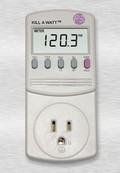 The data made us face some hard facts about our lifestyle. First, what are we doing at 9:00 at night in Summer? Watching TV, running the dishwasher, and cooling off the house with the air conditioner. Why don’t we open the windows? I don’t know. How much electricity does our TV use anyway? So we got out a gadget still in its wrapper that I gave my wife for Christmas – a Kill a Watt. It plugs into the wall socket and accepts the plug from another electric appliance and measures the electricity usage. Here’s some of what we’ve found so far:
We have yet to measure the usage of our A/C unit on the roof, or any of our major appliances, but they’re next! And if you’re considering putting solar panels on the roof and generating all your own electricity, your Smart Meter data will tell you what size array you need. In our case, a 3kW array would cover our daytime needs most of the year, but on the hottest days in Summer, we sometimes would need twice that to power the house. It will be interesting to see how the Smart Meters will be used in future. Perhaps they will communicate with our appliances to run when rates are low on off-peak times. I’m hoping that the utilities use the data to help homeowners discover if they are about average or using more than their neighbors, as this information is nowhere to be found today. I’m not interested in guilt-tripping anyone, but if it wakes a few households up that there are savings to be made, well that would be a good thing. Aggregate that over Southern California, and that could add up to power-plant-size savings. So far, I'm high on Smart Meters. Long Beach Encourages Homeowners to Go Native With the Innovative Lawn-To-Garden Program The Long Beach Water Department has an easy, affordable way to convert your gluttonous grass front yard and parkway into a water-wise wonderland. Long Beach will pay you $3.00 per square foot to rip out your lawn and replace it with native, low water landscaping. My husband Nick and I accepted the challenge at our home, which had a rarely used, somewhat sparse front lawn and parkway. Long Beach makes the process surprisingly easy. And despite our novice landscaping skills, the results are beautiful. Trust me, you can do it too. The first step is to file an application with Lawn-To-Garden, which we submitted on-line in a matter of minutes. The application itself is easy - you just need your water account number and the square footage of grass you are replacing. Next we received a letter in the mail telling us our application was approved and we had 45 days to submit our garden design. This is the reality check in the process – are you actually willing to do the work? Lawn-to-Garden has a lot of resources available, so you don’t need to hire a professional landscaper. You start by taking a short mandatory landscaping class (either on-line or at the water department). Then, you review the list of approved plants and other requirements and make a drawing. My husband and I looked at all the on-line examples, grabbed some graph paper, and went to work. Our drawing was crude, but accepted without ridicule. Then we waited… A few weeks later we received a letter saying our stick figure drawings were approved and we had 120 days to construct our new garden. Step one is to kill your grass. Since ours was already parched, we were in good shape. We hired the incredibly strong Miguel to dig up our remains and fix our sprinklers, which we converted to low flow rotator heads. In the meantime, I showed our plans to my friend Leslie Grenier, a professional landscaper and extremely generous person. She gently suggested a few changes to our design with phrases like “I consider this a freeway-quality plant.” Yikes. We ran the changes by the Lawn-To-Garden folks who didn’t even raise an eyebrow at the fact we were tweaking our design with two weeks to go. I am sure they’ve seen it all. Then we started visiting nurseries to collect the plants and mulch. Seeing all those shades of green and beautiful flowers lined up in front of our house made me realize low water does not mean boring and monotone at all. And in one very long day, Nick, Miguel and I did it – planted over 120 plants in our front yard and parkway and mulched every one. We even had our first butterfly – a perk of going native. We emailed the city, they came and inspected, and we passed. Glorious victory! Joyce Barkley, Long Beach Water Conservation Specialist, told me there are more than 500 Long Beach homes currently in various stages of the Lawn-To-Garden program. The funding comes mostly from a refinanced bond and the program is accepting applications. According to Joyce, the Water Department “expects to see an average water savings of 30% per single family household” that converts to a low water garden. At our home we reduced our water usage by 9 hundred cubic feet in the first partial-year alone. Joyce hopes the program will help change the perception that lawns are beautiful. I am definitely a convert. I feel like my new front yard has a wonderful organic quality that evolves and changes with the seasons. And converting a lawn is a tangible, important step towards responsible water conservation. It feels good to do our part.
For us, Lawn-to-Garden covered about ½ of the cost of replacing our lawn. Our expenses were split about evenly between Miguel’s time and plant/mulch/paver materials. If we were willing to dig out our own grass, we would have come close to breaking even (unless Leslie had charged us what she is really worth). More importantly, Lawn-to-Garden made the process simple. They were constantly available for questions, were flexible with our changes, and really did provide all the on-line resources we needed to succeed. For more information, check out www.lblawntogarden.com. |
AuthorNick Brown, CEA Archives
August 2022
Categories
All
|
Proudly powered by Weebly

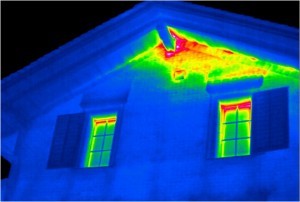
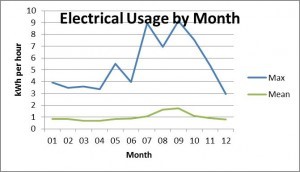
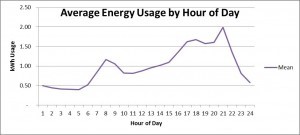
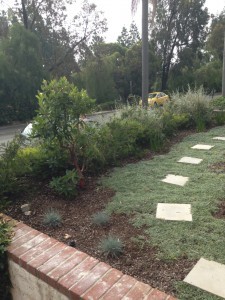
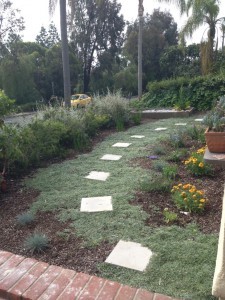
 RSS Feed
RSS Feed